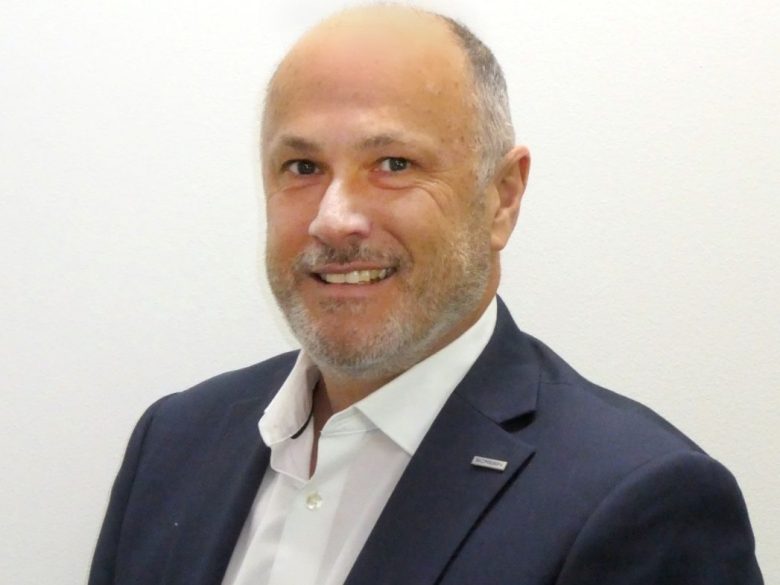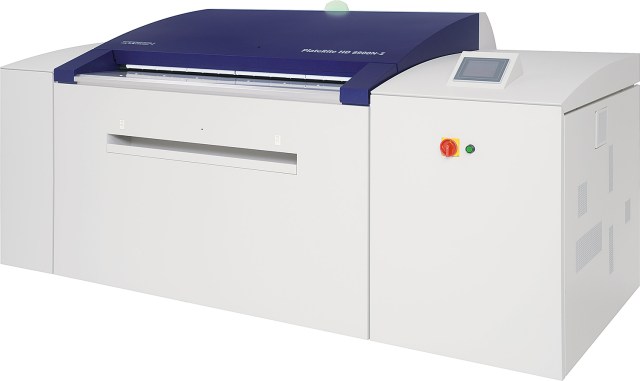
Above: Screen GP Australia managing director Peter Scott
Screen continues to upgrade its PlateRite range of 4pp, 8pp and VLF devices and has recently passed the 20,000-mark in CtP units shipped worldwide, which includes OEM models.
“The tail-end of 2023 saw a marked upsurge in our PlateRite CtP sales and requests for replacements in 2024. These were mostly via our plate-supplier partners Fujifilm and Ferag Australia. CtP today is mostly a replacement market and printers are looking for reliable, well service-backed platesetters – something we at Screen Australia pride ourselves in,” Screen GP Australia managing director Peter Scott said.
Computer-to-Plate turned 30 years old in 2023 and today is virtually all-thermal since the exit of major plate manufacturers from UV violet plates – apart from newspaper CtP and a few legacy devices.
“Processless and chemistry-free plates are now the norm in the commercial CtP sector,” said Scott, “the shift to sustainable, low-emission platemaking is almost complete.”
Supporting offset printers’ platemaking since 1995
Since releasing its first CtP setter – the PlateRite 1080 in 1995 – Screen built on its reputation for reliable film imagesetters and replicated this with 4, 8, 16 and larger page devices.
Several plate suppliers, notably Fujifilm and Agfa, turned to Screen for OEM versions of its Kyoto, Japan-made devices. In passing the 20,000 total CtP units shipped, Screen has also announced upgrades to its 4 and 8-page PlateRite machines.

“Litho offset is still the strongest print method and presses have become phenomenally automated. Packaging offset is streaking ahead for folding carton work, as printers balance the decline in commercial offset with the increase in packaged goods.
“This means more plate changes, more multi-colour work, more short runs. The importance of reliable, well-backed, automated and precise CtP has become all the more important – CtP becomes the heartbeat of busy offset print shops. With this in mind, Screen has upgraded its PlateRite range once again,” Scott said.
The 8-page (B1) PlateRite HD 8900N series is now known as the HD 8900N II and is available in ‘E, S and Z’ versions for delivering 36, 48 or 70 plates per hour respectively.
All models use GLV (Grating Light Valve) optics for uniform light distribution and ultra-high quality dot placement. Leveraging Screen’s market-leading position in photolithography for silicon wafer production, a high-precision autofocus mechanism enables the use of precision screenings such as Screen’s proprietary Spekta-2 and Randot-X FM methods.
Automatic plate loading and unloading adds to efficiency, especially in multi-press environments, with Screen’s AT-M8100N units capable of discharging plates in up to 5 directions for fully automated platemaking and delivery.
Sustainability applies in CtP too
In line with its ‘innovation for a sustainable world’ philosophy, Screen has also managed to reduce energy consumption on the new PlateRite HD 8900N II series.
“Screen is totally committed to CtP and workflow, which is far from a ‘sunset’ market. We continue to invest in R&D and work with our plate partners to refine and automate plate production to an extent that it can even become a ‘hands-free’ prepress operation when auto-loaded with up to 600 B1 plates. As always, we back this up with factory-trained technicians, some with 28 years of experience, right here in the Australia-New Zealand and Pacific Islands region,” said Scott.
“As the new year dawns, we have experienced an unprecedented demand for CtP across all formats: four, eight and VLF page sizes up to 48-pages. New Zealand is particularly strong through our partnership with Fujifilm. Of course, Screen also has a leading position in digital printing, particularly in labels and soon to be in flexible packaging too but Offset is still the dominant print technology by both value and volume, according to a report from the Smithers group.
“This is gratifying, as Screen’s origins were in Lithography and we progressed into Offset Litho when it emerged in the early 1900s. A modern, automated offset shop is unrecognisable to those early ones and CtP production is the heartbeat of the workflow as jobs progress from design to completion. Screen GP Australia is proud to be an important part of this progress.”
Comment below to have your say on this story.
If you have a news story or tip-off, get in touch at editorial@sprinter.com.au.
Sign up to the Sprinter newsletter
